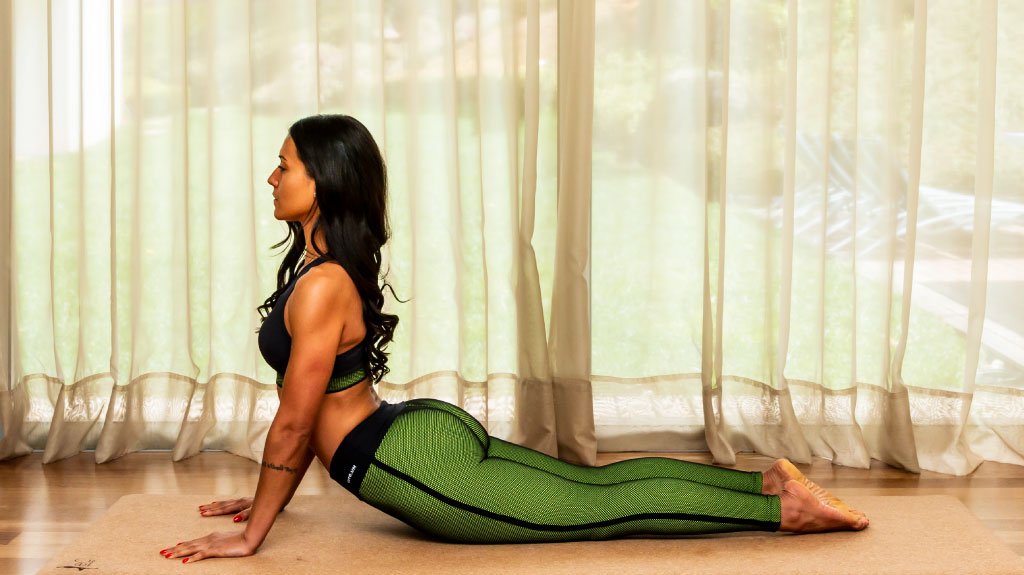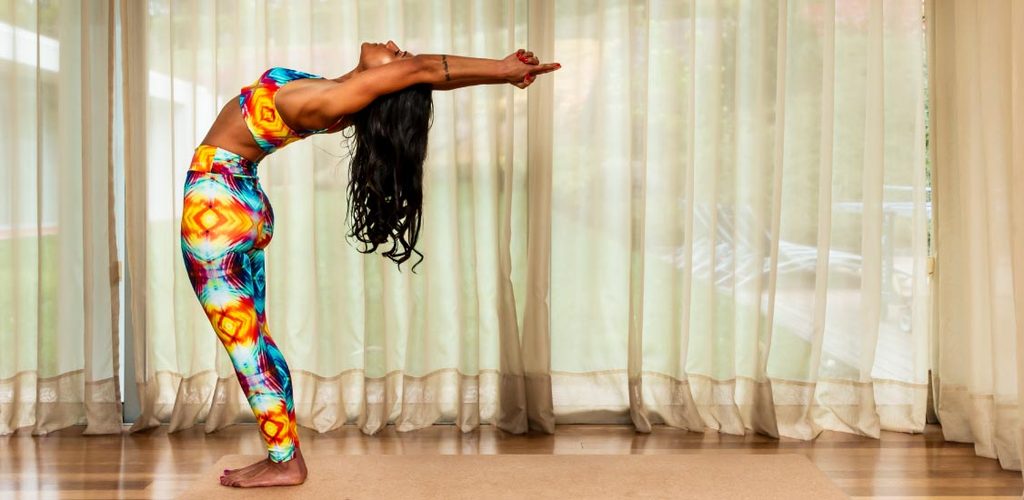With all the different types of exercises in the world, why choose to do yoga at home ? I could stay here for hours and give you countless reasons, but the answer is short. This practice improves your emotional and physical health like no other fitness routine. Yoga can even become a lifestyle.
Practicing yoga at home (or elsewhere) takes us to a state of well-being , not only with us, but with the world. Relaxes the nervous system , improves immunity and increases our lung and brain capacity .
Furthermore, doing yoga regularly can decrease chronic pain and even improve relationships , just to name a few. After all, man has been practicing yoga for at least 5,000 years. So it has to be worth it!
Practicing yoga at home: Where to start?
It is time to abandon the idea that yoga is only for some – for the youngest, for the flexible, for women or for more sensitive and spiritual people. No matter what age, size, shape or stature: yoga is for EVERYONE !
If you already made the decision to start doing yoga at home , good for you! But before thinking about the material to buy and setting up your home, you need to find the type of yoga that suits you best.

With all the yoga methods that exist, some more traditional than others, it is difficult to choose. It is also not easy to understand the differences between the various offers available on the market. My recommendation is to try, read and explore .
The right method is not mine or that of the teachers you get to know on social networks. Whatever makes sense to you, right now. The one who brings into your life what you are looking for now. Find the practice that best matches your needs and goals . I’m sure that, over time, other methods will make more sense to you.
I encourage my students to try yoga with other instructors and in other schools. The best way to get to know the different styles and choose one is to practice . Thus, you will learn the movements, but you will also discover what your vibe is.
The different styles of yoga
Most yoga practitioners in the Western world belong to the Hatha Yoga style. This places great emphasis on detail, precision, alignment, posture performance and breath control.
If you are looking for a more dynamic approach that tones your muscles, you should try Vinyasa Yoga . It is a style that requires a high degree of concentration and dedication on the part of the practitioner. It consists of a sequence of postures that integrate movement and breathing.
If what attracts you to yoga is its relaxing effect on your body and mind, try Yin Yoga . It has a set of slower postures and emphasizes meditation: perfect for those who do yoga at home.
These are just a few examples, but there are many other methods. To find the ideal for you, find someone you can relate to, find a guru, learn and practice. I hope you can quickly start incorporating daily yoga practice into your routine. But keep in mind that doing yoga at home is not a substitute for classes with a well-prepared and experienced teacher. I continue to practice under the watchful eye of other teachers.

7 Tips for an effective yoga practice
Being able to practice anywhere, yoga is the ideal training to do at home. Here, there are no rigid schedules, rush or distractions. The exercise is completely focused on self-acceptance , and you should start slowly, discover and explore your limits.
Not comparing your level with that of other people is the main benefit of doing yoga at home. However, practice requires some basic care before placing the yoga mat in the middle of the room.
1. Create your sacred space
You will be surprised at how easy it is to transform your living space into your own private yoga studio . Choose a quiet place in your home, with enough open space to have complete freedom of movement . It is enough that the floor is smooth and flat, so it can be the living room, the bedroom or a balcony. The important thing is to feel comfortable.
You can add some candles, incense and crystals … Create your sacred space , decorate it to your liking and choose a relaxing song. A touch of soul can help improve your practice.
Move furniture away before starting, leaving an empty wall to lean against.
All yoga spaces require at least one rug . It is possible to use a blanket or towel to practice, but having a yoga mat is the safest and most hygienic option . Ideally, it should be non-slip and easy to carry with you when you want to practice outside the home.
Investing in your own rug can be an inspiration, as it will accumulate your energy. There are even rugs made of cork, an ecologically sustainable material.
A reinforcement, like a meditation cushion comfortable, it is also an excellent complement for those who practice yoga at home. These cushions guarantee comfort in some seated postures . They help mainly when the strength in the back, legs and abdomen is not enough to keep the spine vertical.
2. Define a ritual
After setting a time for yoga exercises at home, you should follow it in a disciplined way. When creating a commitment to yourself, it is easier to maintain a daily practice that becomes part of your routine.
Creating that time for yourself is essential. You will become more present and patient. You will feel more open to enjoy the little moments of joy each day, every day.
3. Train safely
As with any independent training, it is necessary to give priority to safety . And don’t think you can’t hurt yourself in this practice, because in reality it is quite common. Protection is essential, so you should do proper stretching and warming up before starting your yoga session at home.
You must be aware of your body so as not to force exercises that you are not yet prepared to do. Remember that you will not have an instructor to keep an eye on you. You should pay attention to how your body moves and feels.
Start with simpler postures and gradually increase the complexity of the exercises. Respect your limits, both physical, mental and emotional. Respect your body and find the balance between effort and comfort .
Evolution requires time and dedication . Don’t be in a hurry, there is no competition at home. Only if you go with yourself!
4. Plan your practice
Decide the whole process. To do yoga at home, you need to know what to do and for how long .
When you are a beginner, it is important that you outline your practice plan . Make a kind of script suited to your personal needs. For this, it is necessary to have experience and knowledge of techniques. Consult a teacher or use a ready-made methodology (especially if you have an injury). In time, everything will flow, believe me.
Do you need a energy boost ? Try some sun salutations. Do you want to calm your body and mind before going to sleep? Try Yoga Nidra , which includes meditation. When you are doing yoga at home, everything is made easier. You just have to worry about your personal needs and time constraints.
5. Feel comfortable and confident
Wear comfortable clothes: neither too wide, nor too tight, where you can perspire. Opt for lightweight parts , which allow you to move easily in order to be able to do all postures without difficulty. The Eight.One has comfortable and beautiful models. Meet them here!
6. Start early
Each body has its ideal time to practice physical exercises, regardless of the modality. Ideally, yoga should be done in the morning and fasting . The ideal is to perform the movements on an empty stomach, to avoid reflux during practice. If you’re very hungry, drink a juice 30 minutes early . If you can only practice later, avoid eating at least two hours before. Remember that the important thing is to practice!
7. Practice without a phone or computer nearby
Dedicate your yoga time to yourself (and there’s no point in putting your phone in vibration mode). Enjoy that moment that is only yours!
So, what are you waiting for? Write these tips down and perform them for a better yoga practice at home. I give you a more personal advice: before you start the activity, breathe. Thank you for dedicating that time to yourself and the inner journey you are proposing. Feel how blessed you are to have the experience of living here and now.





